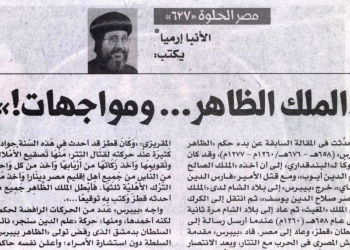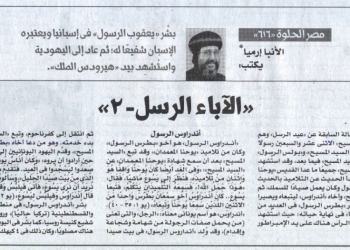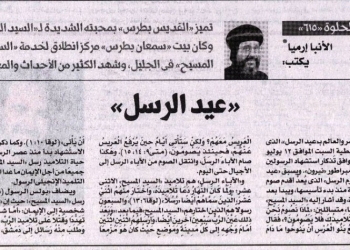In the previous article we talked about the new digital identity for each person who inhabits the Earth through a microchip or a mark in his body that connects him with everything around him. I received many positive comments; one of them was very important because his sender is one of the greatest professors, to whom I have the deepest respect and appreciation due to their scientific position and to what they have presented to the world in the scientific research field for so many year. He wrote: I think that is all science fiction and not reality.
Freedom of opinion is guaranteed to all people. I respect the young and the old, and I take each written comment into consideration. I invite you to have a stroll together into the pages of history and know how communication has developed between humans.
Communication between humans is considered from the very important basic needs to man’s life. Without satisfying that need, there won’t be a family, or a society, or associations. Since the dawn of history man was trying to communicate with others and connect to them in order to transfer his thoughts, and opinions. Communication reflects a transmission process or sending a message from a person (the sender) with a certain way to another person (the receiver). At the beginning the communication process between individuals was directly, probably orally. With the increase of humans and the far distances between them, the need of man for finding another ways of communication emerged, and the journey of humanity started to achieve and develop it throughout ages.
When man discovered writing, the journey of developing the means of communication started. Inscriptions and drawings became a means of transferring messages to others, following up the news and delivering it to them. The Persian and the Hieroglyphic symbols can be considered the oldest forms of writings that scientists -after exerting so many efforts- were able to decode it besides other languages such as: Demotic, Greek, Chinese, Romanian and Latin. With the manufacture of paper in the ancient countries like Egypt and China; the communication developed between humans to be through written messages, thus the postal service started only in China, while papyrus was used all over Egypt. Besides, man used signs, cheering, fire, smoke, and reflections of the sun.
In the 2nd century communications developed after inventing the paper in its new form and developing the first wooden printer invented by China. Man then used pigeon post in transferring messages, in addition to the postman. It was mentioned that postmen used to carry messages on the horsebacks or in the postal vehicles.
In the 15th century, the German Johannes Gutenberg invented the movable-type printing press and used metal instead of wood, in order to print the first book in 1456.
In the Renaissance (14th -17th centuries), the mechanical printing in mobile typeface in Europe has embarked on the era of mass communications, which permanently altered the structure of the society through expanding the circulation of information and ideas which transcended the borders of each country.
In the 18th century, the Telegraphy emerged which depended on the optical signs between stations. Man achieved the greatest development after discovering electricity which transferred to a new stage: Telecommunications in 1836, when Samuel Morse and Alfred Vail, the two scientists, were able to develop an electrical telegraph through which messages can be conveyed.
Then Morse code emerged to encode text characters through electromagnetic pulses and pauses in between that aimed to communicate over longer distances by using cables. The first electrical telegraphic line in the whole world was in the United States of America between Washington and Baltimore.
That’s how the sparkle of the revolution in communications flared up to witness a new development along with the beginning of sending wireless signals and inventing the telephone; the first telephone operator was established in New Haven city in America in 1878, and in the following year Paris inaugurated the first telephone operator.
Afterwards, Guglielmo Marconi, the Italian scientist, invented the radio and used electromagnetic waves; then the Scottish engineer John Logie Baird invented the mechanical television in 1926. In the following year the television that we know today was invented. Subsequently, wireless devices were invented.
That’s how man achieved what was considered a dream and the pages of history still bears a lot, so what was considered fiction and impossible became a true reality, which was invented, developed and widely spread, what couldn’t be accepted by the mind of the ancestors, was easily accepted by the children’s mind. What is happening now in the world is the product of the human thought to control…
Stories about beautiful Egypt never end!
General Bishop
Head of the Coptic Orthodox Cultural Center


 العربية
العربية











